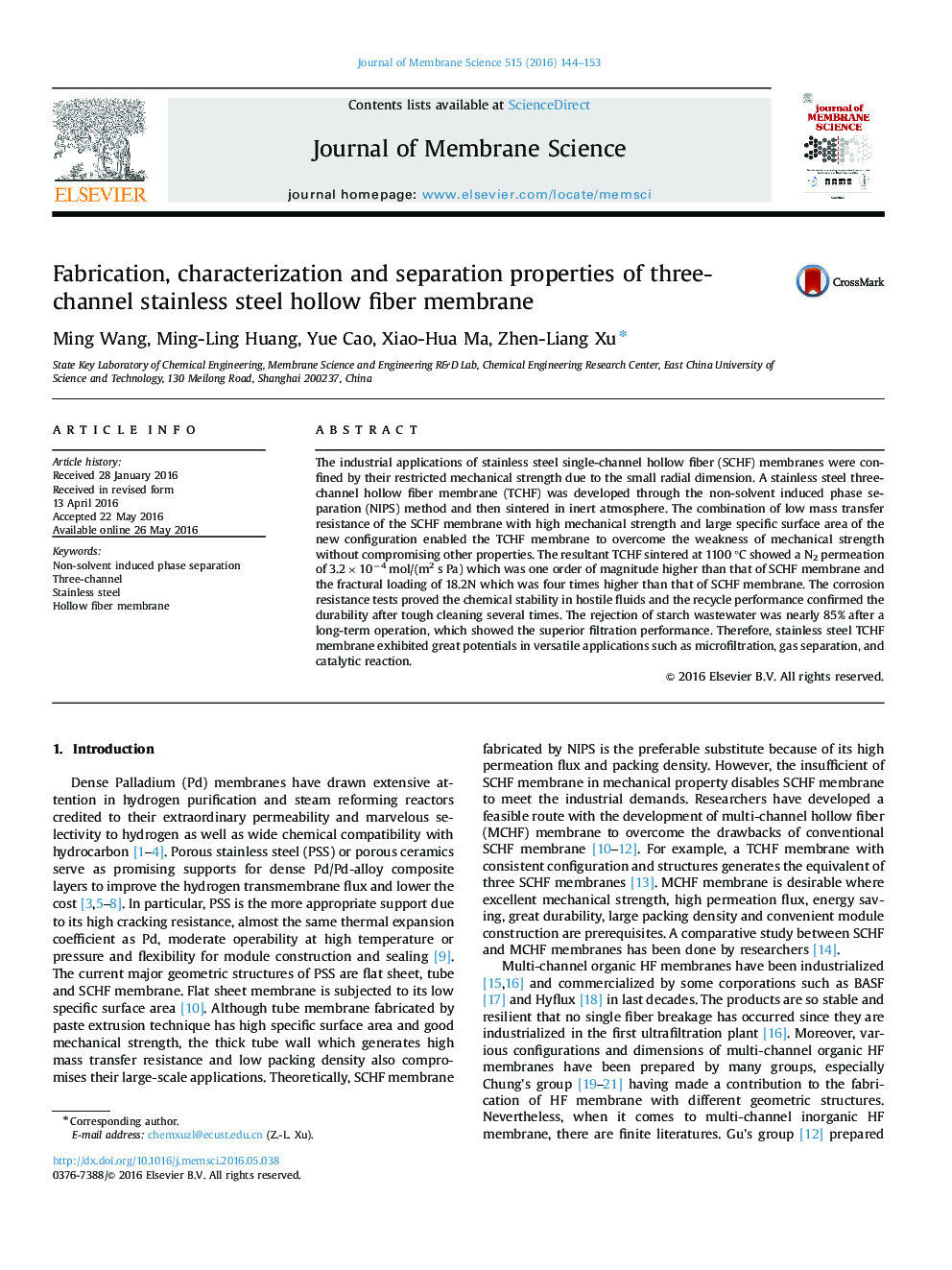| Article ID | Journal | Published Year | Pages | File Type |
|---|---|---|---|---|
| 632384 | Journal of Membrane Science | 2016 | 10 Pages |
Abstract
The industrial applications of stainless steel single-channel hollow fiber (SCHF) membranes were confined by their restricted mechanical strength due to the small radial dimension. A stainless steel three-channel hollow fiber membrane (TCHF) was developed through the non-solvent induced phase separation (NIPS) method and then sintered in inert atmosphere. The combination of low mass transfer resistance of the SCHF membrane with high mechanical strength and large specific surface area of the new configuration enabled the TCHF membrane to overcome the weakness of mechanical strength without compromising other properties. The resultant TCHF sintered at 1100 °C showed a N2 permeation of 3.2Ã10â4 mol/(m2 s Pa) which was one order of magnitude higher than that of SCHF membrane and the fractural loading of 18.2N which was four times higher than that of SCHF membrane. The corrosion resistance tests proved the chemical stability in hostile fluids and the recycle performance confirmed the durability after tough cleaning several times. The rejection of starch wastewater was nearly 85% after a long-term operation, which showed the superior filtration performance. Therefore, stainless steel TCHF membrane exhibited great potentials in versatile applications such as microfiltration, gas separation, and catalytic reaction.
Related Topics
Physical Sciences and Engineering
Chemical Engineering
Filtration and Separation
Authors
Ming Wang, Ming-Ling Huang, Yue Cao, Xiao-Hua Ma, Zhen-Liang Xu,
